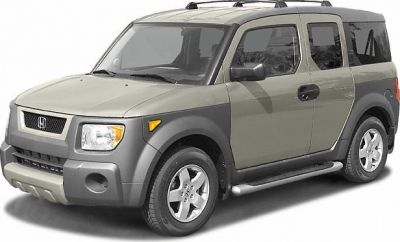 1999 Daewoo Korando (KJ) Dimensions, Size & Specs
1999 Daewoo Korando (KJ) Dimensions, Size & SpecsMeasurements of the 1999 Daewoo Korando, engineered for optimal performance and comfort
| Dimensions | |
|---|---|
| Length: | 4260-4330 mm167.7-170.5 in14.0-14.2 ft |
| Width: | 1841 mm72.5 in6.0 ft |
| Height: | 1840 mm72.4 in6.0 ft |
| Trunk Capacity: | 350 liter12.4 cu ft |
| Trunk Capacity (Max): | 1200 liter42.4 cu ft |
| Weight Specifications | |
| Curb Weight: | 1710-1830 kg3770-4034 lbs |
| Maximal permitted Weight: | 2515 kg5545 lbs |
| Tire Specifications | |
| Rims Size: |
|
| Tire Sizes: |
|
The Daewoo Korando (KJ) is a compact SUV produced between 1999 and 2001, known for its robust build and practical dimensions that cater to both urban and off-road driving needs. With a length ranging from 4260 to 4330 mm (167.7 to 170.5 inches), a width of 1841 mm (72.5 inches), and a height of 1840 mm (72.4 inches), this SUV strikes a balanced presence on the road without being overly bulky. The Korando's curb weight varies between 1710 and 1830 kilograms (3769 to 4036 pounds), providing a sturdy yet manageable weight that supports stable handling and good performance.
Cargo capacity is another key attribute of the Korando (KJ). It offers 350 liters (12.35 cubic feet) of luggage space behind the rear seats, which expands significantly to 1200 liters (42.37 cubic feet) when the rear seats are folded down, making it versatile for transporting larger items or luggage on long trips. The vehicle rides on 15-inch rims fitted with tire sizes such as 235/75 R15, 255/70 R15, providing a good balance of traction and comfort on varied terrains.
With a maximum weight capacity of 2515 kilograms (5546 pounds), the Korando (KJ) supports heavy loads, enhancing its utility for families and adventurers alike. Its balanced size and weight make it a competitive model in the compact SUV segment during its production years. This generation of the Korando blends practical dimensions, respectable cargo space, and reliable weight management, catering well to customers looking for a versatile SUV with moderate off-road capability and everyday usability.
Discover the standout features that make the 1999 Daewoo Korando a leader in its class
Have a question? Please check our knowledgebase first.
The Daewoo Korando (KJ) produced between 1999 and 2001 has a length ranging from 4260 mm to 4330 mm (167.7 to 170.5 inches), a width of 1841 mm (72.4 inches), and a height of 1840 mm (72.4 inches). These dimensions align with typical compact SUVs of its era, offering a balanced combination of interior space and exterior maneuverability.
The curb weight of the Daewoo Korando (KJ) ranges between 1710 kg and 1830 kg (approximately 3,770 to 4,035 lbs), depending on the specific trim and configuration. The maximum gross vehicle weight rating (GVWR) is 2515 kg (about 5,547 lbs), which represents the total allowed weight including passengers, cargo, and the vehicle itself. This relatively moderate weight ensures decent performance and fuel efficiency for an SUV of its size.
The Daewoo Korando (KJ) offers a luggage capacity of 350 liters (approximately 12.4 cubic feet) with all seats in place. When the rear seats are folded down, the luggage capacity substantially increases to 1200 liters (about 42.4 cubic feet). This versatility makes the Korando well-suited for carrying larger loads or cargo, enhancing its utility as a family or adventure SUV.
A typical standard garage door opening is roughly 2.4 to 2.7 meters wide (7.87 to 8.85 feet) and around 2 meters tall (6.56 feet), though dimensions vary depending on country and house design. With the Korando (KJ)'s width at 1841 mm (72.4 inches or about 1.84 meters) and height at 1840 mm (72.4 inches or about 1.84 meters), the vehicle comfortably fits in most standard garages. Its length, at a maximum of 4330 mm (170.5 inches or 4.33 meters), is also well within typical garage length allowances. Therefore, most owners should have no issues parking it inside a standard residential garage.
The Daewoo Korando (KJ) is equipped with 15-inch rims. Tire sizes commonly used on this model include 235/75 R15 and 255/70 R15. These tire dimensions provide a good balance of ride comfort, traction, and off-road capability, consistent with the SUV’s design as a versatile vehicle suitable for both urban and off-road use.
The Daewoo Korando (KJ), produced from 1999 to 2001, marked a notable evolution from its predecessor, which was smaller and often classified as a compact off-road SUV. The (KJ) generation increased in length to up to 4330 mm (170.5 inches), width to 1841 mm (72.4 inches), and height to 1840 mm (72.4 inches), providing enhanced interior space and comfort. This size increase improved passenger room and cargo capacity while still maintaining reasonable maneuverability. The curb weight also rose, reflecting added equipment and a sturdier build. Overall, the KJ generation offered a more modern and spacious package compared to earlier Korando models.
During the late 1990s and early 2000s, the Daewoo Korando (KJ) competed with SUVs like the first-generation Toyota RAV4, Mitsubishi Pajero Sport, and Suzuki Grand Vitara. The Korando (KJ)'s dimensions—around 4.26 to 4.33 meters long, 1.84 meters wide, and 1.84 meters tall—place it in the compact SUV category. It is generally larger in length compared to the Toyota RAV4 of that era but similar in width and height. Its luggage capacity with seats folded (1200 liters) is competitive, making it practical for families and utility users. Overall, the Korando (KJ) offered solid interior space and off-road capability, holding its own against contemporaries in terms of size and versatility.
The Korando (KJ) uses 15-inch rims paired with tires sized 235/75 R15 or 255/70 R15, which provide a balance of ground clearance, ride comfort, and traction. The relatively tall sidewalls on these tire sizes help absorb shocks from rough surfaces, benefiting off-road performance and overall ride quality. The tire width ensures stable handling and grip on various terrains. This setup is typical for SUVs built for mixed urban and off-road use, contributing to the Korando's versatility and driving confidence across different conditions.
The Daewoo Korando (KJ) offers comfortable seating for five adults, with interior dimensions enhanced over its predecessor to provide improved headroom and legroom. The vehicle’s wider 1841 mm (72.4 inches) body and overall length contribute to more cabin space. Combined with versatile seating arrangements, including foldable rear seats, the Korando allows passengers ample space and comfort for short rides and longer journeys. This, paired with its sizable cargo area, makes it a practical choice for families or individuals needing both passenger and storage flexibility.
The Korando (KJ) is designed as a versatile SUV that balances off-road capabilities with everyday urban driving. Its dimensions—compact enough to maneuver city streets comfortably but substantial enough to offer off-road presence—make it adaptable. With moderate ground clearance supported by its 15-inch rims and tires designed for traction, it performs well on rough or unpaved roads. Yet, its moderate size and turning radius also facilitate parking and driving in tighter urban environments. This multifaceted design appeals to buyers who want a vehicle that is capable on varied terrain without compromising practicality and drivability in cities.
Discover similar sized cars.

| Production: | 2003-2006 |
|---|---|
| Model Year: | 2003 |
| Length: | 4229 mm166.5 in |
| Width: | 1788 mm70.4 in |
| Height: | 1816 mm71.5 in |
